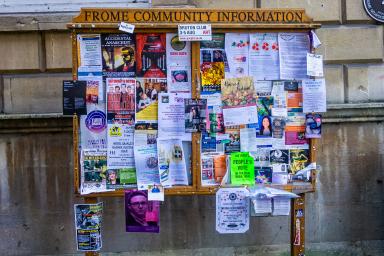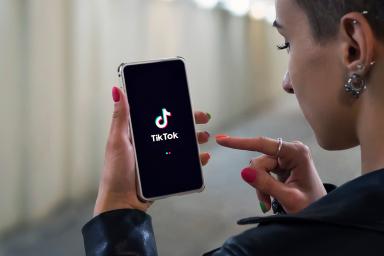How to use impulse purchases to increase sales
Businesses can tap into the psychology of impulse purchasing to drive further sales.
Retailers use various techniques to tap into a common emotion known as FOMO (fear of missing out) – offering time-limited discounts, bargain deals, and promotional displays that encourage customers to buy.
Other tactics stores use to get into their customers’ psyche include product placement, such as placing low-cost sweets and other treats by the checkout to tempt customers while they are queuing to pay.
It’s not just large businesses that benefit from impulse purchases; whether you have a physical store or an online shop, using impulse purchasing techniques can help increase your sales.
What is impulse purchasing?
Impulse purchasing is a consumer behaviour of making unplanned, spur-of-the-moment purchases.
Several factors can influence customers to make impulse purchases.
Positive emotions – especially if customers feel like they are getting a good deal by purchasing a product. For example, getting products at reduced prices through special deals and discounts or buying the last product available.
Negative emotions – might tempt customers to buy products sold to them to solve an issue or make them feel better; they may purchase an item to self-gift to lift their spirits.
Past experiences – if a customer has a previous positive experience purchasing an item, seeing the same or similar product on offer may tempt them to buy again.
Five ways to use impulse buying in store
1. Discounts
Offering discounts and special deals on items can influence impulse purchases as customers come across them when walking around the store.
Discounts can also be a way to draw new customers into your store; if the discount offers attract them, they will likely take a look at additional products, increasing the chances of impulse purchases.
Discounts you could use include:
- buy one get one free
- buy one get one half price
- buy three for the price of two.
Using dump bins to hold discounted goods can attract purchases by encouraging customers to search for a bargain.
You can position the dump bins in high-traffic areas of your store with a sign holder to display the discount.
2. Cross-merchandising
Displaying related products next to each other is known as cross-merchandising as it encourages customers to purchase goods linked to the item they initially planned to buy.
For example, you could display pencils next to notepads, pens, and rulers.
This way, customers planning to buy a pencil might be inspired or reminded to purchase additional stationery-related goods.
Cross-merchandising may also improve customers’ experience as they can easily find related items together.
3. Signage
Using in-store signs or window displays can help trigger impulse purchases by directing customers’ attention to certain products.
Signage can highlight your new items and special deals, encouraging customers to make impulse purchases.
Spotlights can also be used to highlight specific displays over others.
4. Product placement
How you design your store and decide on its layout and the placing of your products can increase the chance of customers making impulse purchases.
You could use point-of-purchase displays as a placement tactic, such as placing products near checkouts so customers can view products while queuing to pay and potentially add last-minute items to their baskets.
This tends to work best with lower-priced items as customers will spend less time thinking about the purchase.
5. Bundling products
Bundling products to create a package that customers can buy together for a lower price is a great way to encourage more purchases.
Customers may feel they have more value; for example, a package selling a mobile phone with a case and a wireless charger could lead to a customer buying all three when only planning to buy the phone.
5 ways to use impulse buying online
1. Product suggestions
As customers click on specific items or add them to their basket, suggesting similar products at the bottom of the page can inspire more purchases.
You could also include a ‘frequently bought together’ section to encourage customers to buy product combinations.
2. Offer free shipping
You could introduce a minimum purchase amount for customers to qualify for free shipping.
This way, your customers will likely make impulse purchases to reach the threshold as they feel like they are benefiting from saving on shipping costs.
You can also remind your customers at the checkout of the free shipping amount and suggest low-priced items that will allow them to qualify.
3. Offer discounts
Discounts can draw your customers’ attention to specific products and help boost sales.
Even if customers are not planning to buy, they might impulse buy if they think they are saving in the future.
For example, a customer could impulse buy a discounted kettle, to readily replace their old kettle so that when it breaks, they will already have a new one, having benefited from a discounted price.
It’s not advisable to offer discounts too often as customers may start to think products are overpriced.
4. Abandoned basket emails
Abandoned baskets are when customers add products to their basket but don’t proceed with the purchase for various reasons, including payment process issues or slow loading times.
You may send your customers abandoned basket emails to tempt them to return to your site and complete the purchase.
Personalised, compelling emails, offering special deals, and reminding customers what they are missing can be effective.
Timing is also essential.
Sending emails too soon might annoy customers; too late could see customers ignore the call to action.
5. Use FOMO
FOMO can help you create a sense of urgency around your products to encourage impulse buyers.
As customers view products, highlighting how many items remain can prompt a quick purchase to avoid disappointment.
You could also have a pop-up indicating how many people are looking at the product or how many people have it in their basket.
Creating a sense of urgency by letting customers know your product is in high demand can inspire quick, little-thought purchases.
Learn with Start Up Loans and boost your marketing skills
Want to market your start-up business? Check our free online courses in partnership with the Open University on effective marketing techniques.
Our free Learn with Start Up Loans courses include:
- Marketing in the 21st Century
- First steps in innovation and entrepreneurship
- Entrepreneurial impressions – reflection
Plus free courses on climate and sustainability, teamwork, entrepreneurship, mental health and wellbeing.
Disclaimer: The Start -Up Loans Company makes reasonable efforts to keep the content of this article up to date, but we do not guarantee or warrant (implied or otherwise) that it is current, accurate or complete. This article is intended for general information purposes only and does not constitute advice of any kind, including legal, financial, tax or other professional advice. You should always seek professional or specialist advice or support before doing anything on the basis of the content of this article.
The Start-Up Loans Company is not liable for any loss or damage (foreseeable or not) that may come from relying on this article, whether as a result of our negligence, breach of contract or otherwise. “Loss” includes (but is not limited to) any direct, indirect or consequential loss, loss of income, revenue, benefits, profits, opportunity, anticipated savings, or data. We do not exclude liability for any liability which cannot be excluded or limited under English law. Reference to any person, organisation, business, or event does not constitute an endorsement or recommendation from The Start-Up Loans Company, its parent company British Business Bank plc, or the UK Government.
Your previously read articles
Sign up for our newsletter
Just add your details to receive updates and news from Start Up Loans
Sign up to our newsletter


